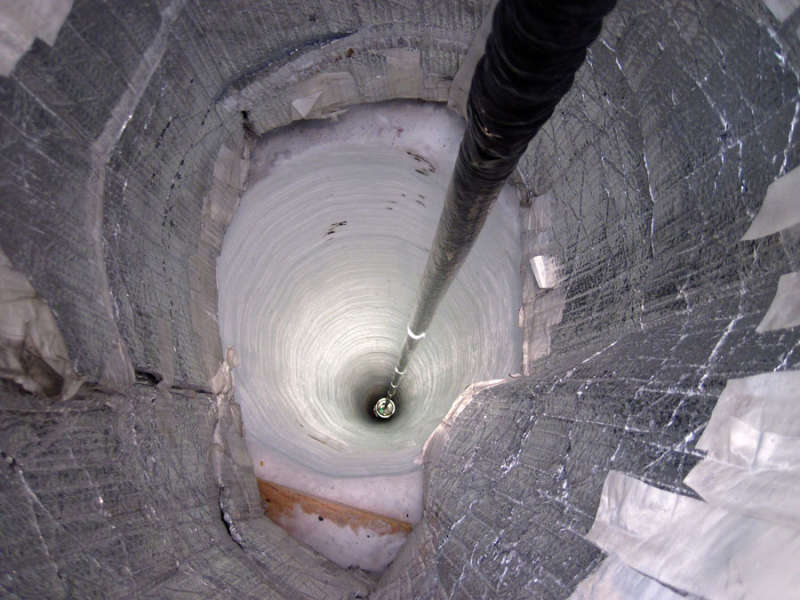 |
Астронет: Астрономическая картинка дня Подледный лов космических нейтрино http://variable-stars.ru/db/msg/1249761/eng |
Credit & Copyright: NSF / B. Gudbjartsson,
IceCube Collaboration
Explanation:
Scientists are melting holes in the bottom of the world.
In fact, almost 100 holes melted near the
South Pole are now being used as astronomical observatories.
Astronomers with the IceCube Neutrino Observatory
lowered into each vertical lake a
long string knotted with
basketball-sized light detectors.
The water in each hole soon refreezes.
The detectors attached to the strings are sensitive to blue light emitted
in the surrounding clear ice.
Such light is expected from ice collisions with high-energy
neutrinos emitted by
objects or explosions out in the universe.
Late last year, the last of
IceCube's 86 strings was lowered into the frezzing abyss,
pictured above, making IceCube the largest neutrino detector yet created.
Data from a preliminary experiment,
AMANDA, has already been used to create the
first detailed map of the high-energy
neutrino sky.
Experimental goals of the newer
IceCube include a search for cosmic sources of neutrinos, a search for neutrinos
coincident with nearby
supernova and distant
gamma-ray bursts, and, if lucky, a
probe of
exotic physical concepts such as
unseen spatial dimensions and
faster-than-light
travel.
Authors & editors:
Robert Nemiroff
(MTU) &
Jerry Bonnell
(USRA)
NASA Web Site Statements, Warnings,
and Disclaimers
NASA Official: Jay Norris.
Specific
rights apply.
A service of:
LHEA at
NASA /
GSFC
& Michigan Tech. U.
